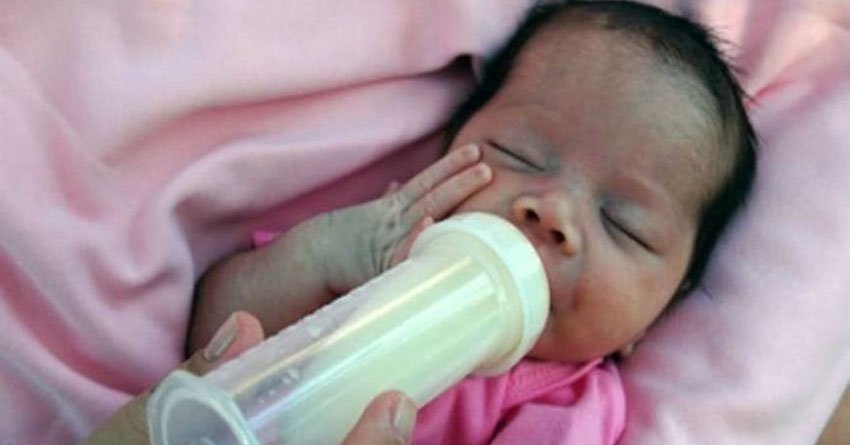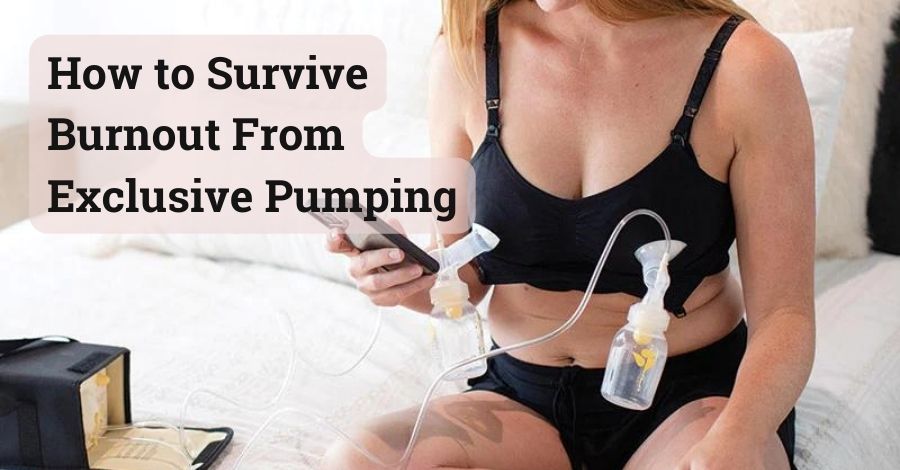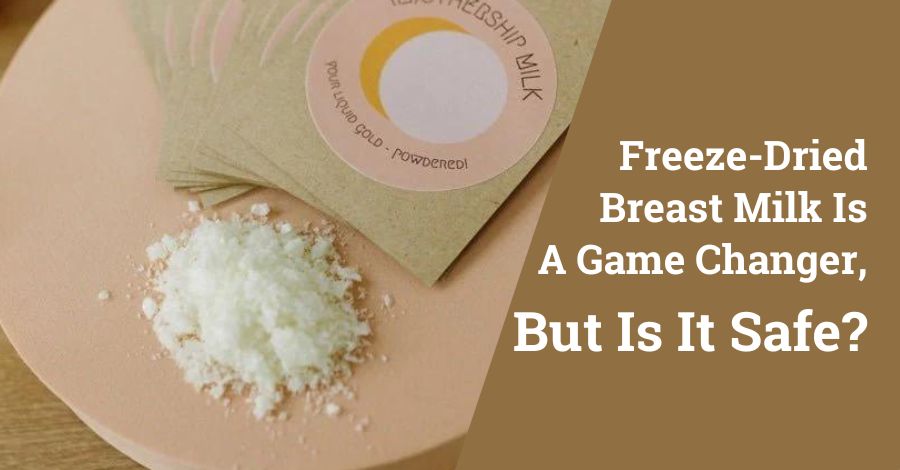
Key Points
- The article describes freeze-dried breast milk, which can be stored for up to three years and is easy to transport.
- The process, called lyophilization, removes water while preserving nutrients.
- Benefits include long shelf life, nutrient preservation, and convenience.
- However, the process is unregulated, expensive, and carries contamination risks.
- Some doctors express safety concerns, while no major health organizations endorse it.
- Reconstituting freeze-dried milk requires careful water-to-powder ratios.
- Parents are advised to research thoroughly before using such services.
Disclaimer: This post is for information only. We are not connected to or affiliated with any companies that offer freeze-dried breast milk services mentioned here in hyperlinks or images.
Breastfeeding moms know that breast milk is like liquid gold, packed with the perfect blend of nutrients for their baby’s growth and development. But life gets busy, and sometimes you need a way to store that precious milk for longer. What if someone tell you that your breast milk can stay good for up to three years. Or that you will never have to worry about keeping it cold while traveling. It is hard to believe, right? Freeze-dried breast milk promises to make that possible.
This preservation technique is gaining popularity among parents, with companies nationwide offering to turn your breast milk into powder for a fee. But is it too good to be true? Let’s dive into the world of freeze-dried breast milk, exploring its benefits, drawbacks, and how it’s done.
You May Also Read: Does Stress Affect Milk Supply? Impact and Remedies – What Every Mom Should Know
What is Freeze Drying?
Freeze-drying, or lyophilization, is a process that removes water from breast milk while preserving its nutritional properties. This technique, commonly used in the food industry to extend shelf life, transforms breast milk into a powder that can be reconstituted with water. This means the reconstituted milk retains the essential nutrients and antibodies, ensuring that babies still receive the benefits of breast milk even when fresh milk isn’t available.
The Science Behind It
First, the breast milk is frozen to a very low temperature, turning the water into ice. Then, it’s placed in a vacuum chamber where the air pressure is reduced. This makes the ice turn directly into vapor without becoming liquid. The water vapor is removed, leaving behind a dry powder with all the vital components of breast milk, minus the water.1
Why Freeze Dry Breast Milk?
Storing breast milk in the fridge or freezer isn’t always the best option. When you refrigerate milk, it stays fresh for only a short time. And if you freeze it, the milk might lose some of its good stuff over time. But freeze-drying is different. It has some benefits.
- Extended Shelf Life: Breast milk can be stored for up to three years.
- Nutrient Preservation: Retains the bioactive properties of breast milk.
- Versatility: Freeze-dried breast milk can be added to first foods, smoothies, and snacks.
- Space-Saving: Takes up less space than fresh or frozen milk.
- Travel Friendly: Ideal for traveling and easy for caregivers to handle.
- Convenience: Can be stored at room temperature and easily reconstituted.
Understanding the Benefits of Breast Milk Freeze-Drying
Beyond convenience and extended shelf life, freeze-drying offers several potential benefits:
- Extended Breastfeeding: The new AAP feeding guidelines say it’s good to breastfeed for a long time if both mom and baby want to, like two years or more.
- Preserves Nutrients: Retains essential vitamins, minerals, proteins, lactose, fat, and antibodies crucial for your baby’s development.
- Solution for High Lipase Milk: Freezing dried breast milk can help moms with high lipase milk avoid the unpleasant taste that develops after storage.
- Long Shelf Life: Freeze-dried breast milk could stay good for up to three years when stored properly.
- Retains Immune Boosters: Freeze-drying helps preserve vital white blood cells and immunoglobulins (antibodies) that support your baby’s developing immune system.
- Improved Portability: The lightweight and compact nature of freeze-dried breast milk makes it ideal for travel or daycare, ensuring your baby receives the benefits of breast milk even when you’re not present.
- Reduced Risk of Contamination: The freeze-drying process minimizes the risk of bacterial growth, making it a safer option for long-term storage.
- Convenience: Easy to store and transport, freeze-dried breast milk can be reconstituted with water, making it a practical option for busy mothers.
- Space-Saving: Takes up significantly less space than frozen milk, making it easier to store large quantities.
How to Freeze Dry Breast Milk
To make powdered breast milk, we start by moving frozen breast milk into a special machine called a freeze dryer. In this machine, the frozen milk gets turned into a gas without becoming liquid first, a process called sublimation. During this step, most of the water in the milk is taken out, leaving behind the good stuff.
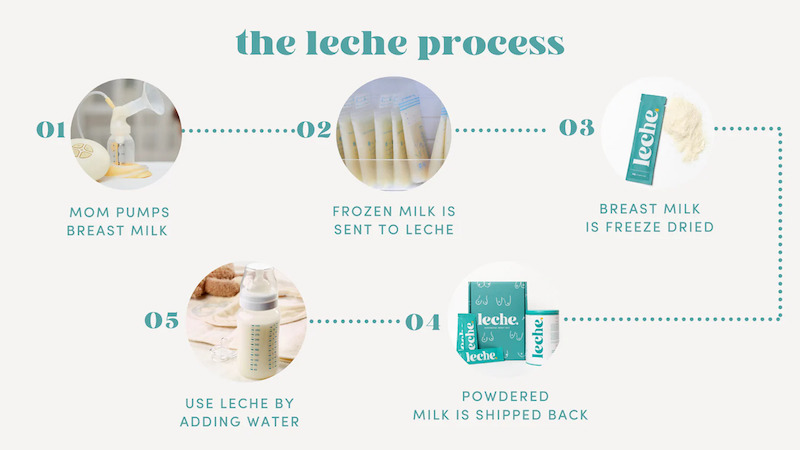
Here is what you need to follow:
1. Pump and Freeze:
So, first off, you’ll need to pump your breast milk and store it in the freezer. You can decide how much you want to send. Some companies give you special bags to store the milk in, which are really clean and safe.
2. Ship to Company:
Then, you’ll ship those frozen bags to the freeze-drying company in a special insulated cooler to keep them cold.
3. Deep Freezing:
When they get it, they freeze the milk even more, like super cold, at temperatures below -40°F!
4. Sublimation:
They use something called sublimation to turn the ice crystals in the milk into gas, removing about 98% of the water. This leaves behind a powder that has no water left in it.
5. Packaging:
After that, they put the powder into special bags that keep out light, germs, and moisture. Then, they mail it back to you all safe and sound.
The reconstitution process is straightforward: Every 100 ounces of freeze-dried breast milk can be remade into 100 ounces of milk. Since the water content varies, moms receive specific water-to-powder ratios for rehydration.
You know how everyone’s milk is a little different? Well, they tell you how much water to add to make the milk just right. Some bags might need three ounces of water, while others might need five ounces. Easy as that!
How to Freeze Dry Breast Milk at Home (Not Recommended)
Despite what you may see on social media, freeze-drying breast milk at home is not recommended at all. Dr. Stellwagen and Dr. Parga-Belinkie both advise against home freeze-drying, emphasizing the difficulty in accurately reconstituting the milk. Here is why they don’t recommend freeze dry breast milk at home:
- Specialized Equipment: Freeze dryers are expensive and require expertise.
- Maintaining Hygiene: A sterile environment is crucial to prevent bacterial contamination.
- Inconsistent Results: Achieving optimal drying conditions at home can be challenging.
Important Disclaimer: Freeze-drying breast milk at home is not recommended due to the specialized equipment required and the potential for contamination. Improper drying can lead to bacterial growth and compromise your milk’s safety.
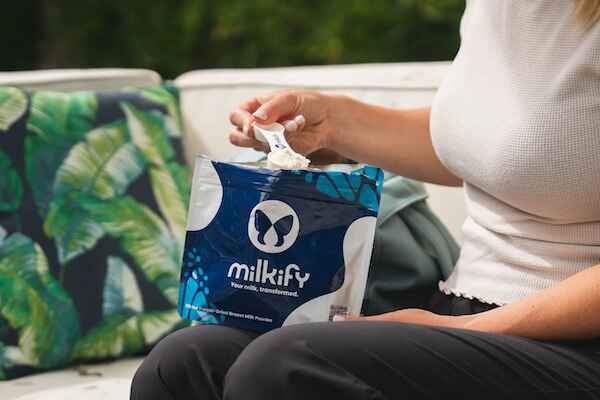
Is Freeze-Dried Breast Milk Safe?
Some pediatricians are not sure if freeze-dried breast milk is completely safe. Dr. Uday Devaskar, a neonatologist and NICU Medical Director at Centinel Hospital, believes it is probably safe if done correctly under perfect conditions. However, he also questions why anyone would want to do it. On the other hand, Dr. Amna Husain, a board-certified pediatrician at Pure Direct Pediatrics, disagrees. She does not consider it safe because she worries about the mixing process. She says it needs to be done very carefully to get the right dilution.
Both doctors agree that freeze-drying breast milk is not necessary. They point out that no major health organizations recommend or regulate this service. The CDC and the American Academy of Pediatrics have not said if it is safe or not. Even Dr. Berkley Luck, Chief Operating Officer and co-founder of Milkify, suggests that parents should research carefully before using any freeze-drying service for their breast milk, as the FDA does not regulate this type of service yet.

Does Freeze Drying Breast Milk Lose Nutrients?
No preservation method is perfect, and freeze-drying breast milk does result in some loss of nutrients. However, freeze-drying is one of the best ways to keep the nutritional content of breast milk intact. Studies show it holds onto more essential nutrients than regular freezing. Some sensitive nutrients may break down a little, depending on the temperature and storage conditions during processing. But overall, the nutritional value of freeze-dried breast milk remains high.
What are the Downsides of Freeze Drying Breast Milk?
While freeze-drying offers numerous benefits, there are several concerns too about the safety and regulation of freeze-dried breast milk:
1. Lack of Regulation
The FDA does not regulate freeze-drying facilities for breast milk, and there is limited research on its safety and nutritional composition.
2. High Cost
Freeze-drying services are expensive, making them inaccessible for many moms. Marisa Caramanico, a mom of one who used Booby-licious to freeze-dry her breast milk, noted spending about $800 for under 400 ounces of freeze-dried milk.
3. Risk of Contamination
The freeze-drying process does not kill bacteria in the milk, raising concerns about contamination. Dr. Stellwagen highlights the risk of bacteria such as Cronobacter, which thrives in dry milk powder. Adding a pasteurization step could help mitigate this risk.
4. Nutritional Alterations
The impact of freeze-drying on the nutritional composition of breast milk is not fully understood. Some studies suggest that the process preserves carbohydrates and proteins, but may reduce levels of antioxidants like vitamin C.
5. Potential for Malnourishment
Incorrect reconstitution of freeze-dried breast milk can lead to improper nutrition. Each bag may require a different amount of water, and inconsistent ratios can lead to adverse outcomes such as low sodium levels in infants.
6. Suitability for Premature Babies
Freeze-dried breast milk may not be suitable for premature babies as it may lack some essential components. Consult your pediatrician for specific guidance.5
Pros and Cons of Freeze-Drying Breast Milk
| Pros | Cons |
|---|---|
| Long-term storage (up to 25 years). Portability and convenience. Nutrient preservation. Reduced risk of contamination. Improved immunity. | Cost. Availability. Nutrient loss. Not suitable for premature babies. At-home risks (not recommended). |
How to Use Your Freeze-Dried Breast Milk
Using freeze-dried breast milk is simple:
- Measure: Follow the instructions provided by the freeze-drying company.
- Warm Water: Use sterile, warm (not boiling) water to mix with the powder.
- Shake Well: Gently shake the bottle to ensure the powder is fully dissolved.
- Temperature Check: Test the milk temperature on your wrist to ensure it’s comfortably warm.
- Feeding: Once mixed, the reconstituted breast milk can be offered to your baby at the appropriate temperature.

Important Note: Always follow the specific instructions provided by your chosen freeze-drying service or healthcare professional regarding preparation and use.
Companies That Freeze Dry Breast Milk
Several companies are really pushing the idea of freeze-dried breast milk.
Booby Food
FreezeDried And Co
Milkify
Leche
Bébé Bru
Booby-Licious
are some of the main ones doing this. Each of these brands has its own prices, but they all pretty much do things the same way.
Look for companies with a strong reputation, positive customer reviews, and clear information about their processing methods and safety protocols.
How Much Does it Cost to Freeze Dry Breast Milk?
Shipping even the smallest amounts of breast milk can cost between $110 and $300, depending on the brand. One company allows you to send up to 2,400 ounces of breast milk and will turn it into powder for almost $3,000. They also donate part of each sale to a local breast milk bank.
If freeze-dried breast milk is too expensive, don’t worry. There are other safe and healthy options for feeding your baby that are more affordable. You can use fresh or properly frozen breast milk, donor milk, or infant formulas.
The Final Takeaway
Freeze-dried breast milk is like a super cool way to save all the good stuff in it so your baby can have it later. It’s kind of a big deal at first because you need special equipment or services, but it’s worth it because it keeps the milk fresh for a long time and saves you time too. Whether you do it at home(which we do not recommend) or get help from professionals, freeze-drying helps make sure your baby gets all the good stuff from your milk whenever they need it.
This guide has talked all about how freeze-drying breast milk works. If you’re still not sure about it or need more help, it’s best to talk to your baby’s doctor or a lactation expert. They can give you the best advice based on your situation and what your baby needs.
References
- What Is Freeze-Dried Breast Milk? – https://www.parents.com/what-is-freeze-dried-breast-milk-7377103#
- Freeze-Dried Breast Milk Is Gaining Traction — But Is It Safe? – https://www.whattoexpect.com/first-year/breastfeeding/freeze-dried-breast-milk
- How to Freeze Dry Breast Milk – https://www.milkbymom.com/milk-by-mom-blog/how-to-freeze-dry-breast-milk
- The Effect of Freeze-Drying on the Nutrient, Polyphenol, and Oxidant Levels of Breast Milk. – https://www.semanticscholar.org/paper/The-Effect-of-Freeze-Drying-on-the-Nutrient%2C-and-of-Cortez-Soria/3381f3f97a99320a9441d2c85b29fcfafdfec8a1
- Experts warn that freeze-dried breastmilk powder may not be suitable for all babies – https://theindependent.sg/experts-warn-that-freeze-dried-breastmilk-powder-may-not-be-suitable-for-all-babies/
- Freeze Dried Breast Milk 101: Risks, Safety & What Parents Should Know – https://www.romper.com/parenting/freeze-dried-breast-milk

Hi, I’m Lindley! I’m a stay-at-home-mom sharing all of the tips and tricks I learn throughout my motherhood journey. I’m now navigating through wife life and being a mom while blogging my crazy adventures. I’m so glad to have you along for the ride!
